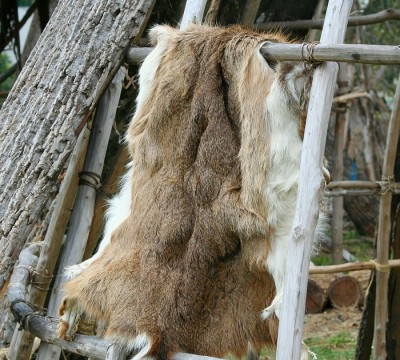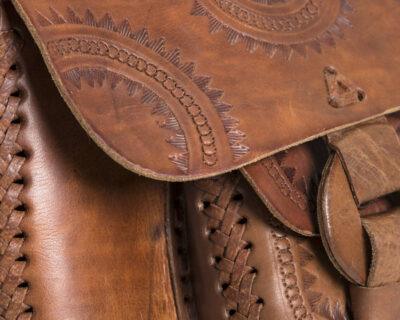I will admit I have never been much of a trapper. But every hunter, farmer, homesteader and so on should know how to handle hides.
When we butcher a deer, elk, bear, cow or any large mammal, we don’t just harvest it for the meat. There also is the hide available for use. Hides can provide clothing, blankets, tools, shoes, wall decorations and scores of other items. Hides can make a hunter a fine jacket, or buckskin pants that would make Tecumseh jealous. Fine pelts can be sold to fur buyers and give a trapper cash on the side. The farmer can preserve cattle hides for all sorts of uses from boots and jackets, to selling to leather buyers.
Preparing the Hide
After an animal is skinned, be careful not to damage the hide and remove as much of the flesh and fat as possible. The method I use – which I found online in a trapper’s forum years ago – is a simple method used in the US for a very long time. I soak the hide or hides in several gallons of water with 1/2 to 3/4 of a box of baking soda and 1 ½-pounds of unslaked lime. I soak the hides in this solutions for three to four days. I know folks who only use rainwater, but I also use water from natural springs and wells as well.
I then de-hair the hide. If you don’t know how to de-hair a hide, it is very easy to find videos on YouTube showing you the process. After the animal is de-haired, I use a fleshing tool which I also use for de-hairing, and carefully flesh out the hide by removing all fat and any meat that I missed during the skinning process.
I soak the hide overnight again, using a bucket with rainwater or fresh stream water.
Discover More Than 1,000 Secrets For A Healthier, Safer Off-Grid Life!
I then place the hide on a stretcher with many control points and allow it to dry for 24 hours. After it is dry, rub the hide to soften it.
Now you need to brain it. Brains? Yep, the best and natural way to preserve the hide is by using the animal’s own brains, or the brains of another. Mix up the brains in a blender with a little warm water and soak the hide in the mix. I doubt you’ll want to drink a glass of this rather gross concoction, but the brains actually help to preserve the hides. While there are more modern methods, this one is the most satisfying in my opinion.
After you have brained it, I insert a sturdy old axe handle as I dangle the hide from a tree, pole or something along those lines, insert a ring and spin to squeeze as much of the water out as possible. I then rub dry the hide as best as possible.
I repeat this process several times, over the course of an hour or two.
Finishing Up
After drying as much as possible, stretch the hide out again. I work the hide before I stretch and I never place an animal hide on the stretcher stiff.
I smoke my hides after this. This prevents the hides from becoming stiff if they become wet, and adds a bit more preservation to the skins. I use a smokehouse and a cold-smoke method. I also use a small fan in the smokehouse to equally distribute the smoke so that the hide has a good, even coloring.
New Survival Energy Product Makes Every Window A Powerful Solar Charger
This is a fun step, because I also have made jerky at the same time!
After your hides are preserved, dried and smoked, they are now ready for use. If you take your time and do a good job you will have skins that can be used for many applications and will last you a very long time.
Happy tanning and God bless!
How do you preserve and tan hides? Share your tips in the section below:
Learn How To ‘Live Off The Land’ With Your Gun. Read More Here.
 Off The Grid News Better Ideas For Off The Grid Living
Off The Grid News Better Ideas For Off The Grid Living





